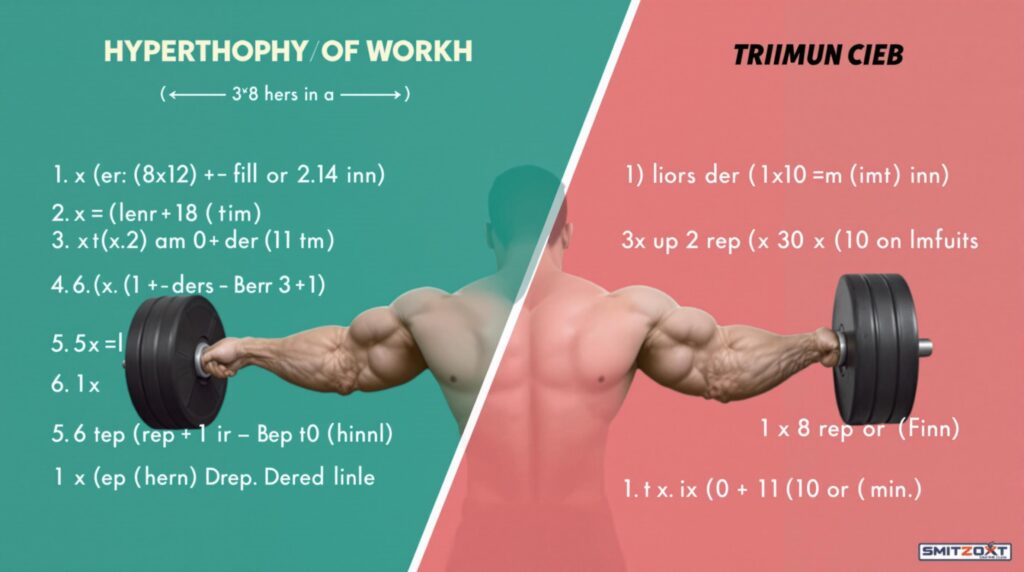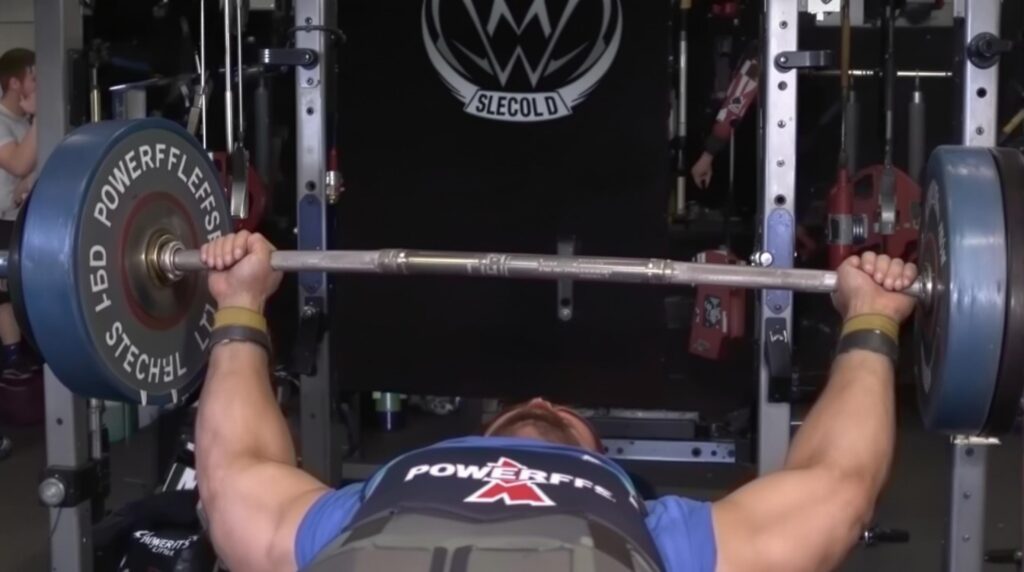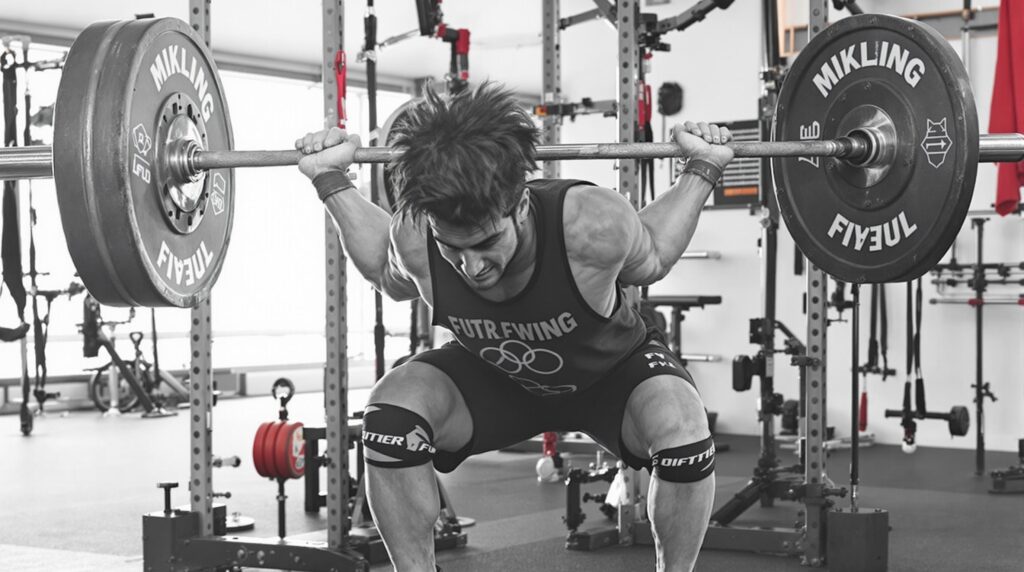The 3×8 workout method has remained a foundation of effective strength training for decades, balancing muscle growth with strength development through its moderate-heavy weight approach. This time-tested protocol combines three sets of eight repetitions to create the perfect storm of mechanical tension, metabolic stress, and volume efficiency that both beginners and advanced lifters can benefit from.
Key Takeaways
- The 3×8 method involves three sets of eight reps with 70-80% of your 1RM and short rest periods
- This approach simultaneously builds strength and muscle size while minimizing excessive muscle damage
- Studies show 3×8 training can increase muscle cross-sectional area by 4.6-5.2% in just six weeks
- Progressive overload is essential—adding weight once you can complete all three sets with proper form
- Compound movements like squats and bench presses are ideal exercises for the 3×8 protocol
Understanding the 3×8 Method: A Balanced Approach for Size and Strength
The 3×8 workout method represents a perfect middle ground in resistance training. It involves performing three sets of eight repetitions using 70-80% of your one-rep maximum (1RM) with relatively short rest periods of 60-90 seconds between sets. This approach has been championed by respected strength coaches like Dan John for its practical efficiency and balanced results.
What makes the 3×8 protocol so effective is its ability to simultaneously trigger multiple adaptation pathways in your muscles. The moderate-heavy weights create sufficient mechanical tension to stimulate strength gains, while the rep range and shorter rest periods generate metabolic stress that drives hypertrophy. For busy athletes or anyone with limited gym time, this creates an efficient training stimulus that delivers measurable progress without excessive fatigue or recovery demands.

The Science Behind 3×8: Why It Works for Muscle Growth
The effectiveness of the 3×8 method for muscle growth isn’t just gym lore—it’s backed by solid physiological principles. Training at 70-80% of your 1RM creates optimal mechanical tension while also generating significant metabolic stress when combined with short rest periods. This combination has been shown to be particularly effective for hypertrophy.
One of the key advantages is how the 3×8 protocol recruits both muscle fiber types. Unlike higher-rep schemes that may under-stimulate Type II fibers, the moderate weight used in 3×8 ensures activation across the entire muscle fiber spectrum. A 2023 study highlighted this advantage, showing that an 8-rep protocol produced 21.3% hypertrophy gains compared to only 14.6% in a 35-rep group over the same training period.
The volume efficiency of 3×8 also hits the sweet spot for muscle growth. Each exercise delivers 24 total reps, falling perfectly within the hypertrophy-optimal range while limiting excessive muscle damage. This allows for more frequent training sessions and better recovery compared to extreme high-volume approaches.
Building Strength With 3×8: Neural Adaptations and Force Production
While the 3×8 scheme is often associated with hypertrophy, it’s also remarkably effective for developing maximal strength. A 2023 study found that non-periodized 3×8 programs increased 1RM strength by 12.9-17% in just six weeks—impressive numbers that rival more strength-focused protocols.
The strength benefits come from neural efficiency improvements and force production capabilities. When compared to a classic 5×5 strength routine, the 3×8 approach offers a more balanced tension-fatigue ratio. While 5×5 maximizes absolute force output, the 3×8 method combines tension with metabolic fatigue in a way that drives substantial strength gains while being easier to recover from.
Let’s put this in practical terms: For someone with a 300-pound squat max, working with 3×8 at 210 pounds (70% of 1RM) provides the optimal intensity for strength development. This weight is heavy enough to challenge the neuromuscular system but allows for sufficient volume to drive adaptations.
Progressive Overload: The Key to Continuous Gains
No training program will produce ongoing results without progressive overload, and the 3×8 method offers clear pathways for progression. The most straightforward approach is to add 5-10 pounds once you can complete all three sets of eight reps with good form.
Another effective strategy is using AMRAP (as many reps as possible) finishers on your final set. Here’s how a typical progression might look:
- Week 1: 200 lbs for 8, 8, 8 reps
- Week 2: 200 lbs for 8, 8, 10 reps (pushing for max reps on final set)
- Week 3: 210 lbs for 8, 8, 8 reps (weight increase after achieving 10+ reps)
Tracking your workouts becomes essential for consistent progress. When you can perform 10 or more reps on your final set, it signals readiness for a 5-15 pound weight increase on that exercise. This systematic approach prevents plateaus while ensuring continuous adaptation.
Exercise Selection and Program Design
For maximum effectiveness with the 3×8 method, exercise selection plays a crucial role. Compound multi-joint movements should form the foundation of your program—squats, bench presses, rows, deadlifts, and overhead presses. These exercises enable heavier loads and trigger systemic hormone responses that benefit overall growth.
A well-designed 3×8 program might include this structure:
- Primary compound lift: 3×8 (70-80% 1RM)
- Secondary compound movement: 3×8 (65-75% 1RM)
- Isolation exercises for lagging muscles: 3×12 (50-65% 1RM)
Rest intervals should be kept to 60-90 seconds between sets to maintain the metabolic stress component that drives growth hormone release and hypertrophy. This moderate rest period strikes the balance between recovery for strength performance and metabolic stimulus for growth.
A sample 4-day split using the 3×8 method might look like this:
- Monday: Lower Body (Squats 3×8, Romanian Deadlifts 3×8, Leg Extensions 3×12)
- Tuesday: Upper Body Push (Bench Press 3×8, Overhead Press 3×8, Tricep Extensions 3×12)
- Thursday: Lower Body (Deadlifts 3×8, Lunges 3×8, Leg Curls 3×12)
- Friday: Upper Body Pull (Rows 3×8, Pull-ups 3×8, Bicep Curls 3×12)
Optimizing Technique for Maximum Results
The effectiveness of the 3×8 protocol depends heavily on proper execution of each repetition. Using a 2:1:2 tempo (two seconds eccentric, one-second pause, two seconds concentric) maximizes tension throughout the movement. This controlled approach prevents momentum from taking over and keeps the target muscles engaged.
For bench press, proper form would include keeping elbows at approximately 45° angles, lowering the bar to mid-chest with a three-second descent, and driving upward with control. The goal is to maintain continuous tension rather than just moving weight from point A to point B.
Initially, it’s advisable to leave 1-2 reps in reserve on each set to prevent joint strain and technique breakdown. As your proficiency improves, you can push closer to muscular failure on the final set. The focus should always be on mind-muscle connection rather than ego lifting, which ensures the target muscles receive maximum stimulus.
Advanced Applications: Periodization for Long-Term Progress
For experienced lifters, incorporating the 3×8 method into a periodized approach can extend progress for months or years. Undulating periodization—alternating 3×8 with blocks of 5×5 (strength) or 3×12 (endurance) every 6-8 weeks—prevents adaptation plateaus while targeting different physiological mechanisms.
The Hepburn Method offers another advanced application, integrating 3×8 principles with a progression from 8 sets of 2 reps to 8 sets of 3 reps. This methodical approach adds 10 pounds once the full progression is completed and has been shown to drive substantial strength gains in advanced lifters.
An 8-phase progression model might look like this:
- Week 1: 4×2, 4×3 (same weight)
- Week 2: 5×3, 3×2 (replacing one 2-rep set with a 3-rep set)
- Week 3: 6×3, 2×2
- Week 4: 7×3, 1×2
- Week 5: 8×3 (all sets now at 3 reps)
- Week 6: Add 10 pounds, return to 4×2, 4×3
This systematic variation maintains motivation through variety while allowing for targeted focus on specific adaptations, preventing the stagnation that often occurs with long-term implementation of a single method.
Sample 3×8 Workouts for Different Experience Levels
The 3×8 protocol can be adapted for lifters at any stage of their fitness journey. Here are sample routines based on experience level:
Beginner 3×8 Full-Body Routine (3x weekly):
- Barbell Squats: 3×8
- Bench Press: 3×8
- Bent-Over Rows: 3×8
- Shoulder Press: 3×8
- Rest 90 seconds between sets
Intermediate Upper/Lower Split (4x weekly):
- Lower Day: Squats 3×8, Romanian Deadlifts 3×8, Leg Press 3×8
- Upper Day: Bench Press 3×8, Rows 3×8, Overhead Press 3×8, Pull-ups 3×8
- Rest 60-75 seconds between sets
Advanced Push/Pull/Legs (6x weekly):
- Push: Bench Press 3×8, Incline Press 3×8, Overhead Press 3×8, Dips 3×8



